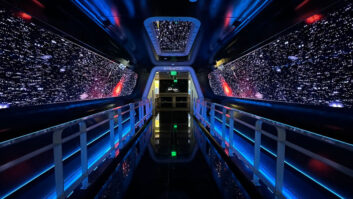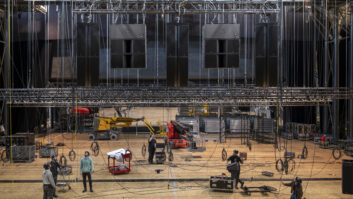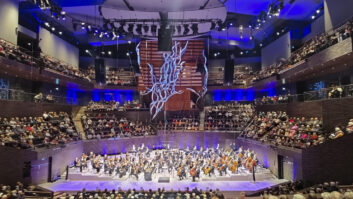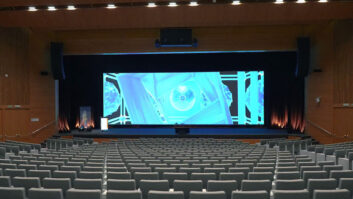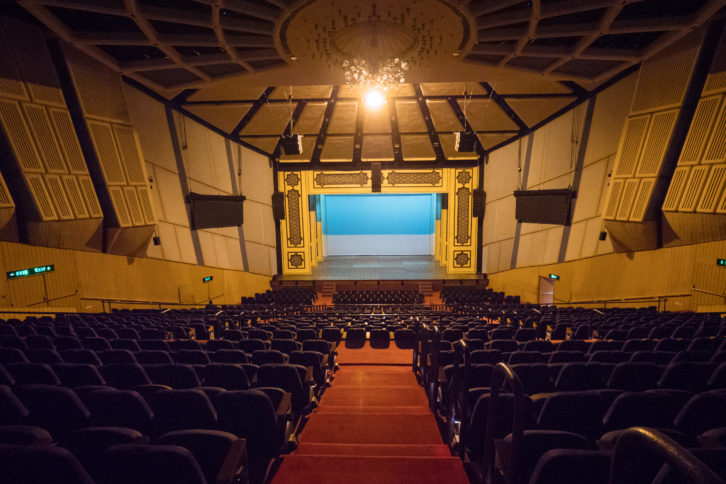
Sitting at the tip of Nariman Point in bustling Mumbai, the National Centre for Performing Arts (NCPA) is unique in India. As the home of the Symphony Orchestra of India and a focal point for the arts, the NCPA celebrates both Indian and western culture, presenting an eclectic programme of music, theatre, opera, dance, film and spoken word performance.
The NCPA dates from 1969 and has since grown across an eight-acre site. Today its five performance spaces range from the 1,100-seat Jamshed Bhabha Theatre and 1,000-seat Tata Theatre, to the smaller Experimental Theatre with its 267 moveable seats, the Godrej Dance Theatre with a capacity of 177, and the smallest, The Little Theatre, seating just 112.
All five spaces have been acoustically treated to the highest standard. The Tata Theatre, for example, is the work of renowned American modernist architect Philip Johnson and legendary acoustician Cyril Harris, designed to host classical music and theatre without amplification.
Meeting expectations
Despite its architectural and cultural status, until recently the NCPA had virtually no permanently installed sound systems, other than a small handful of loudspeakers. For the venue’s technical team, providing sound reinforcement of a standard to meet the expectations of NCPA’s patrons was often a struggle.
“We used to have to bring in external sound, hiring in systems from various vendors in the city,” explains Ashwin Jyoti, NCPA’s head live sound engineer. “With different vendors we would have different kinds of equipment – not all of the same standard. It would depend on the budget that each of the programming teams would have and how much they could spend on sound.”
When in 2017 the decision was taken to invest in permanent sound reinforcement solutions for the Experimental Theatre and the Little Theatre, the brief was simple. “The whole point of this investment was to standardise how the NCPA sounds,” says Jyoti. “No matter what the show is, the source is the same; it doesn’t keep changing with each vendor and each engineer.”
A sound investment
In their search for a solution, NCPA considered several sound reinforcement brands, however, one stood out, as Ashwin explains: “One of the biggest reasons that we decided to choose the d&b system is the quality of the after sales service that would be available. This was very important.”
The d&b audiotechnik sales partner in India is Ansata, an audio solutions specialist based in Bengaluru in southern India, but with branch offices in all major cities, Mumbai included. “We already knew d&b sounded good,” says Jyoti, “but we were very secure in knowing that if we bought this system, we would always have Ansata behind us. No matter what time of day or night, we knew we’d get a good response, and a quick response.”
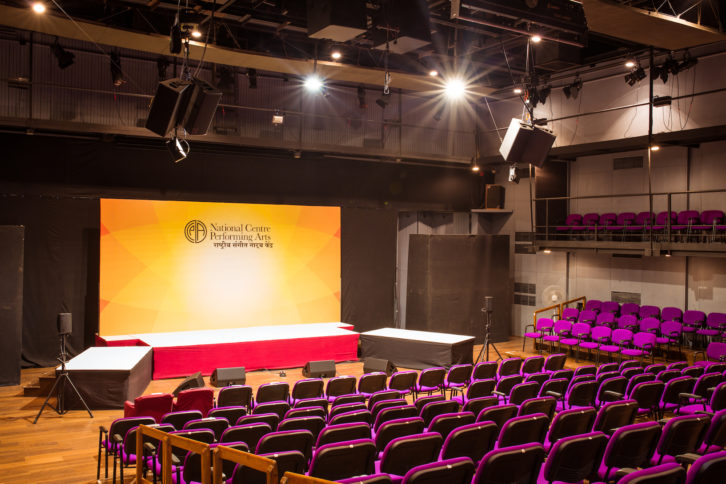
Working closely with Ansata, and with support from Gert Sanner at the d&b Asia Pacific office, Jyoti developed system designs for the two spaces. So as not to interrupt the day-to-day running of the NCPA, Jyoti and the Ansata team installed the loudspeakers in a series of short shifts planned around performances. “We didn’t have an extended period where we could concentrate on the installation,” adds Jyoti. “So we would put up one side, then wait maybe five days while shows would be going on, and then we’d put up the other side, and then the cabling. All while running shows with vendor sound.”
Little and Experimental
The Little Theatre received a simple left/right system consisting of a single d&b V10P point source loudspeaker complemented by a groundstacked, cardioid V-GSUB per side. Additional fill for the small space was provided with a Yi10P point source as a centre fill and two E6 loudspeakers as front fills. For stage monitoring, four d&b M4 wedges are available. Amplification is driven by the d&b 30D installation amplifier.
The system for the Experimental Theatre presented a different challenge. “Here you can have seating on all three sides, or on all four sides, or the stage can change from one place to another,” states Jyoti. “You can do anything you want as far as seating is concerned. To be able to install a system that would address all possible seating arrangements, I worked with d&b to make sure that we could do this in as well covered a manner as possible.”
The system they designed for the Experimental Theatre featured four V10P point source loudspeakers, complemented by the controlled cardioid performance of a pair of V-SUBs, and four E6 cabinets serving as out/front fills. Here, six d&b M4 monitors are available for the stage. As with the Little Theatre, amplification is provided by D20 for the main system and monitoring.
Notably, the installation at NCPA was the first ever d&b V-Series point source installation in India.
Since commissioning, comments have been extremely positive. “Just in the two months since we started working with the new installed system, some of the best theatre production companies and some of the best sound engineers in India have come and worked with the system and they have been very impressed,” says Jyoti. “Everybody is happy with the changes.”
Best of all, patrons’ complaints about the sound have stopped entirely. “The NCPA is a venue where, the people who come here are extremely sensitive to what it should be, how it should sound, and what it should look like,” says Jyoti. “Before, we used to have lots of complaints about the sound quality, but in the last two months we have had none.”


